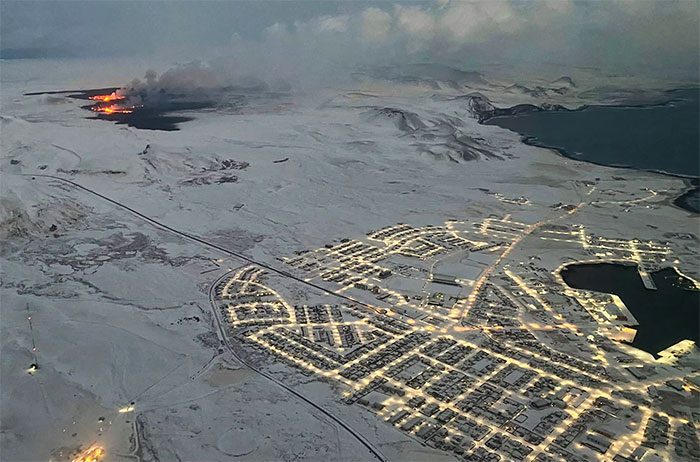From Pompeii to Mount St. Helens, volcanic eruptions have marked significant milestones in human history. The recent volcanic eruption in Iceland is yet another event that will be recorded in the annals of historic eruptions due to its unexpected nature and proximity to human habitation.
The Latest Volcanic Eruption in Iceland Could Impact Many Lives!
The Reykjanes Peninsula in southern Iceland is a hotspot for geological activity. Experts have been monitoring seismic activity in the area, and everything unfolded dramatically on the night of December 18, 2023, when a volcanic fissure erupted impressively. This marks the fourth eruption since 2021 and is a significant milestone in the volcanic history of this island nation. A series of earthquakes occurred before the eruption, with warning signs lasting over 90 minutes prior to the actual explosion.

All residents of the town of Grindavik near the southwest coast have been evacuated after hundreds of seismic tremors occurred, signaling an imminent volcanic eruption.
Having been dormant for nearly a millennium, the area entered a new phase of volcanic activity in March 2021. Since then, it has experienced three eruptions on March 19, 2021, August 3, 2022, and July 10, 2023. The previous period of multiple eruptions occurred in the early 13th century, making this a rare scientific phenomenon. Thousands of earthquakes have been recorded in Iceland since late October 2023, prompting authorities to declare a state of emergency to evacuate nearby Grindavik.

The Icelandic Meteorological Office reported that up to 500 tremors were recorded in the area from 6 PM on November 10 to 6 AM on November 11 (GMT), with 14 of those having a magnitude above 4.
The newly opened fissure, measuring 2.5 miles (4 km) in length, is expelling lava at a rate ten times that of the previous three eruptions. The ongoing development of the fissure has raised concerns among local residents as it is located near the Svartsengi geothermal power plant and the town of Grindavik. The lava flow is just 2.8 km north of Grindavik. The town’s 3,000 residents have been evacuated, worried about the impact of this event on their homes. Many fear that their village could be completely wiped out!
By the afternoon of December 19, 2023, only one-third of the fissure remained active, and the number of eruptions had significantly decreased. Currently, three vents are still erupting lava, down from five during the initial eruption. This could indicate that activity may cease in the coming days; however, some experts believe it may lead to the fissure continuing to release magma at a modest rate for several months.
Iceland has 33 active volcanic systems, the most in Europe. The Icelandic Meteorological Office initially stated that an eruption was likely to occur “in a few days rather than a few hours,” as lava had been accumulating underground at a depth of about 5 km for several days.
However, volcanic researchers in Iceland remain intrigued by the magma beneath the surface in the Svartsengi area, questioning whether it migrates from Fagradalsfjall or originates from another subsurface source. Experts have collected lava samples from the eruption and are working to understand the cause behind this event.
Iceland is No Stranger to Fiery Eruptions and Ash Clouds!
The volcanic eruption in Iceland further solidifies the island’s reputation as a hotspot of volcanic activity. With nearly 130 volcanoes on the island, the country is implementing some of the most effective volcano preparedness and response measures in the world. Every decade since the 19th century has recorded at least one eruption in the area.

Three eruptions occurred near the Fagradalsfjall area on the Reykjanes Peninsula in March 2021, August 2022, and July 2023, all distanced from infrastructure and densely populated areas.
The high density of volcanoes can be attributed to Iceland’s location between two tectonic plates: the Eurasian Plate and the North American Plate. Undersea mountains separating these plates cause the release of rock and molten magma. The eruption of Eyjafjallajökull in 2010, a volcano that had been dormant for nearly two centuries, was one of the most significant volcanic activities in Iceland in recent times. Although it was a small and non-lethal eruption, the impact was profound, with the ash cloud grounding most air travel across Europe for over a week.

The current seismic activity in Iceland does not affect the country’s most famous volcano, Katla. This volcano has an eruption history of 34 to 78 years, with the last major eruption occurring in 1918. Scientists believe an eruption is imminent, and the ongoing earthquakes could be warning signs of an upcoming event.


















































